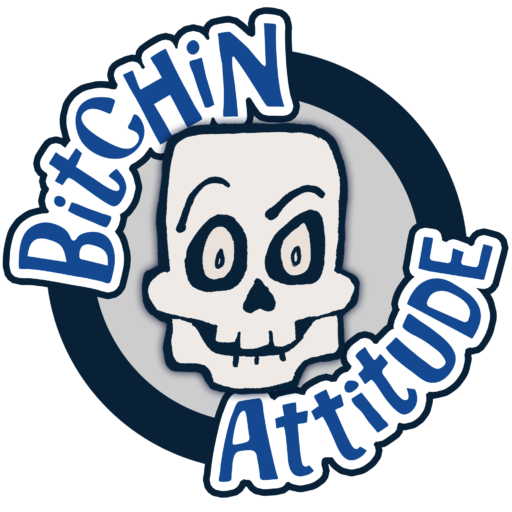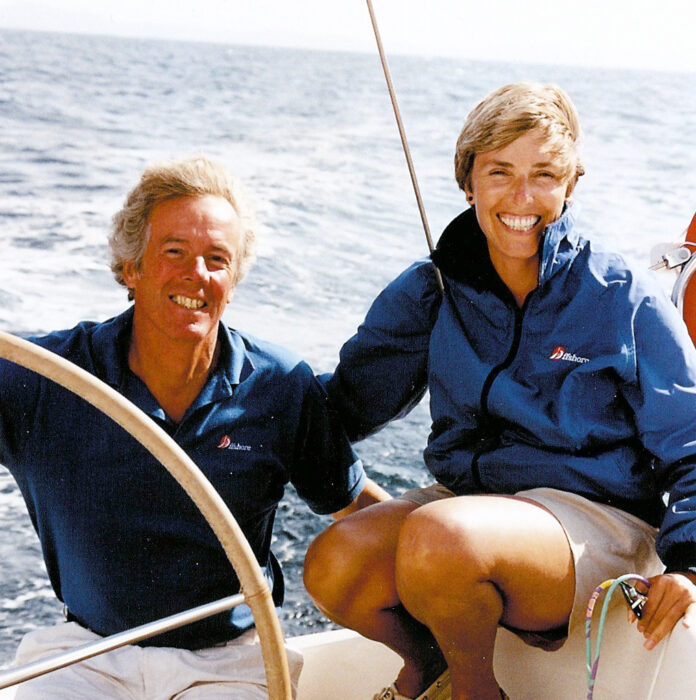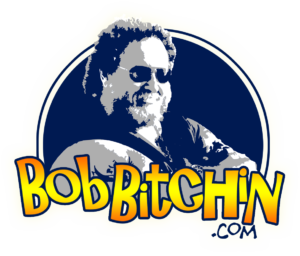Introduction by Beth Oliver
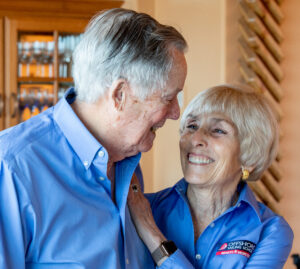 “Sailing changed my life,” is the most often heard statement in the Offshore Sailing School display each year at the US Sailboat Show in Annapolis, Maryland. In addition to the school’s graduates saying that, it is exactly what Doris Colgate says herself. As the President/CEO of Offshore Sailing School, Doris says that sailing “opened new doors, provided new and lasting friendships, and treated me to the most wonderful travel opportunities, and above all – a job and partner beyond my wildest dreams.” Her “partner” is her husband, Steve Colgate, founder, co-owner and Chairman of Offshore Sailing School, and one of the foremost racing sailors in the United States. Both Steve and Doris have been individually recognized and inducted in the National Sailing Hall of Fame, and their company’s sailing, racing, and cruising programs have taught more than 160,000 adults and families how to enjoy the sailing lifestyle for more than 60 years. OFFSHORE High, the biography about Steve, Doris, and Offshore Sailing School, written by Herb McCormick, was published in 2021.
“Sailing changed my life,” is the most often heard statement in the Offshore Sailing School display each year at the US Sailboat Show in Annapolis, Maryland. In addition to the school’s graduates saying that, it is exactly what Doris Colgate says herself. As the President/CEO of Offshore Sailing School, Doris says that sailing “opened new doors, provided new and lasting friendships, and treated me to the most wonderful travel opportunities, and above all – a job and partner beyond my wildest dreams.” Her “partner” is her husband, Steve Colgate, founder, co-owner and Chairman of Offshore Sailing School, and one of the foremost racing sailors in the United States. Both Steve and Doris have been individually recognized and inducted in the National Sailing Hall of Fame, and their company’s sailing, racing, and cruising programs have taught more than 160,000 adults and families how to enjoy the sailing lifestyle for more than 60 years. OFFSHORE High, the biography about Steve, Doris, and Offshore Sailing School, written by Herb McCormick, was published in 2021.
Q&A With The Colgates
Bitchin: How did You guys meet?
Colgates: In July 1967 DC took a 4 weekend Learn to Sail course at Offshore Sailing School (classrooms at 5 E. 40th Street in NYC, sailing lessons from a yard on City Island (in the Bronx), NY). The instructor was not Steve, he was a nice guy named Dan who was running the school for Steve while Steve was in Newport on American Eagle for America’s 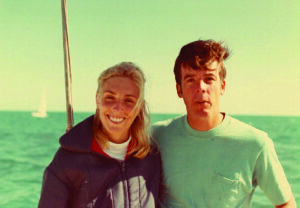 Cup Trials. I took that course with my then husband and in January 1978 we flew down to the Jack Tar Hotel on Grand Bahama Island to take a racing course run by Steve Colgate called Sailing Symposiums. At that time the most sailing I had done was the Learn to Sail course and a couple of daysails with friends at Yachting Magazine where I was working (they recommended Offshore when I asked where I could learn to sail). So going into a hard core racing course was a big eye-opener for me. Steve and I met for the first time the day I arrived, when I donned a bathing suit, with a see-through cover-up and walked down the docks to introduce myself to him as the person who wrote that gee-whiz story Yachting published in the January ’68 boat show edition of the magazine. Steve seemed quite underwhelmed, he was busy said a guy helping him put the Solings into racing shape. But later that week, while his girlfriend and my then husband primped before dinner, Steve and I met for drinks in the bar, and the love affair began.
Cup Trials. I took that course with my then husband and in January 1978 we flew down to the Jack Tar Hotel on Grand Bahama Island to take a racing course run by Steve Colgate called Sailing Symposiums. At that time the most sailing I had done was the Learn to Sail course and a couple of daysails with friends at Yachting Magazine where I was working (they recommended Offshore when I asked where I could learn to sail). So going into a hard core racing course was a big eye-opener for me. Steve and I met for the first time the day I arrived, when I donned a bathing suit, with a see-through cover-up and walked down the docks to introduce myself to him as the person who wrote that gee-whiz story Yachting published in the January ’68 boat show edition of the magazine. Steve seemed quite underwhelmed, he was busy said a guy helping him put the Solings into racing shape. But later that week, while his girlfriend and my then husband primped before dinner, Steve and I met for drinks in the bar, and the love affair began.
Bitchin: How did the idea for Offshore Sailing School originate?
Colgates: Steve: I was at a cocktail party in NYC and met a fellow named Mike D’Agostino who was an architect for J.C. Penny. He commented on my transatlantic experience and whether I had ever considered starting a sailing school. There was only one that advertised nationally and it was a Californian sailboat broker that taught clients how to sail the boats they bought. Mike had a 34’ yawl and I had the experience. We filled a niche for professionals like lawyers, doctors, airline pilots etc. who never had had the time or opportunity to learn to sail. They now had the time, money and interest.
Bitchin: About how many students have you introduced to sailing over the years?
Colgates: We say we have taught more than 160,000 students but I think it is a lot more. However, back in 1964 there were no computers, no real way to track numbers of 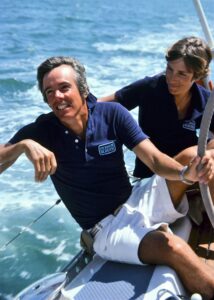 clients easily except for a yellow legal pad with 1111 marks for every 5. I spent my lunch hours and many evenings at Yachting (50 West 44th Street) walking over to Steve’s offices, helping him with paperwork. When I joined Steve full-time in 1970 we were using IBM cards, each with a customer name, holes along the side for each letter of the alphabet. When you wanted to send something out to the “A’s” you stuck a thin metal rod through the A holes. That’s when we started to count names.
clients easily except for a yellow legal pad with 1111 marks for every 5. I spent my lunch hours and many evenings at Yachting (50 West 44th Street) walking over to Steve’s offices, helping him with paperwork. When I joined Steve full-time in 1970 we were using IBM cards, each with a customer name, holes along the side for each letter of the alphabet. When you wanted to send something out to the “A’s” you stuck a thin metal rod through the A holes. That’s when we started to count names.
Bitchin: My granddaughter Tabitha sailed with Offshore while filming a documentary of scrub Island. How many bases do you now have, and where are they located?
Colgates: Currently we have five bases: St. Petersburg, FL with boats at the St. Pete Municipal Marina; ‘Tween Waters Island Resort & Spa on Captiva Island, FL; Stock Island Yacht Club & Marina in Key West, FL: Scrub Island Resort, Spa & Marina on Scrub Island, BVI; and The Moorings base on Wickhams Cay, Tortola, BVI. We are working on opening a 6th in SW Florida, stay tuned.
Bitchin: So I know you guys have trained a lot of sailors, BUT how often Do you guys get to “get out there” and enjoy the life you promote so well?
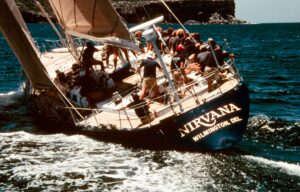 Colgates: For years we led flotilla cruises with graduates of our various programs, chartered 4 to 10 boats at a time and sailed with 4-6 of those grads on the lead boat. That took us the best cruising grounds all over the world. We did at least 70 of these, before turning the cruise leader reigns over in 2014 to a wonderful couple (Nate and Heather Atwater) who continue to lead these cruises (around 6) each year. Our most recent “getting out there” was in the BVI, December 2022, when we chartered a 50’ powercat with friends for a week. This week we’re going for an evening sail on Impossible Dream with others out of Ft. Myers Beach. We don’t sail much anymore, but I enjoy giving talks on all of our wonderful adventures and experiences through these many years.
Colgates: For years we led flotilla cruises with graduates of our various programs, chartered 4 to 10 boats at a time and sailed with 4-6 of those grads on the lead boat. That took us the best cruising grounds all over the world. We did at least 70 of these, before turning the cruise leader reigns over in 2014 to a wonderful couple (Nate and Heather Atwater) who continue to lead these cruises (around 6) each year. Our most recent “getting out there” was in the BVI, December 2022, when we chartered a 50’ powercat with friends for a week. This week we’re going for an evening sail on Impossible Dream with others out of Ft. Myers Beach. We don’t sail much anymore, but I enjoy giving talks on all of our wonderful adventures and experiences through these many years.
Bitchin: What boats do you use for your training? Are they available to the public? .
Colgates: We teach beginners, performance sailors and racers on the Colgate 26. All the cruising courses are taught on 40’ to 50’ monohulls and catamarans. We have a Lagoon 40, Leopard 40 and Leopard 45, Jeanneau 437 and 440 at our Florida locations. In the BVI we have Colgate 26s and charter sail catmarans and monohulls, and powercats from The Moorings on an annual basis for sailing and powercruise cruising courses.
Bitchin: Have you made any major crossings or voyages, or has keeping up with the school kept you chained to the desk?
Colgates: Steve: We bought a 54’ ocean racing sloop we named “Sleuth”. It was the old “Scaramouche,” called Demon when we bought it, which won the Newport to Bermuda Race in 1974. We campaigned it from 1978 to 1981 in most major ocean races in this hemisphere. Then I became the principal helmsman on the 81’ maxi “Nirvana” and that kept me away from the office desk at times. From DC: it kept him away from an office desk A LOT! But that’s all good, as I swore from the beginning I would not get in the way of his racing. I kept my word, except once when I was physically and verbally threated by a guy we hired as president and Steve had to come home from the start of a Bermuda Race to be by my side as we fired that guy. P.S. I was on Sleuth for nearly all the races. I skipped the TransAtlantic from Edgartown to Cork, Ireland; and luckily for me, I couldn’t do the ’79 Fastnet on Sleuth because Steve’s mom was with us in Cowes and I was in charge of getting her and some other wives to Plymouth. Sleuth won its class in that terrible race, and we women anguished ashore as more and more reports came in of lost people and boats . . . until we saw Sleuth posted as finished! On the yacht club board.
Bitchin: What do you think has been the biggest reason for your schools success?
Colgates: Total dedication to the quality of instruction, the dedication and quality of our teaching staff, and the dedication and persistence to the greater good of our headquarters sales and management team. We work in lockstep to ensure that our clients get the very best sailing (and powerboat) instructional experience there is. We are constantly innovating, and are copied all the time, and as a small company we can move fast when opportunity or difficult times occur. We were open and operating full at new headquarters 10 days after Hurricane Ian totally destroyed the offices (and its contents) we had worked out of for 37 years. We moved our boats quickly after Ian passed through, to other locations (principally St. Pete), and immediately had someone working on insurance claims. Our boats made it through extremely well because of the skills our “offshore team” exhibited in moving and securing them quickly when it suddenly looked like the storm would hit us head on. In the 60 years of Offshore Sailing School’s life, the company (and Steve and I) has been through 5 recessions, many world-wide downturns, 3 devastating hurricanes, and more. We are survivors, we are doers. And so is our team.
Bitchin: What are your plans for the future?
Colgates: Grow the business and do better than pre-Ian profits, open new locations as they become available, add powercats to the Florida fleet through lease-purchase agreements . . . whatever seems to work best to keep us top of mind in the sailing and boating instruction world. Personally, we are looking for more personal time to just relax and enjoy life together. I turn 83 in May, Steve turns 89 in June when we will be celebrating that milestone on a Star Clipper one-week cruise on the Amalfi Coast.
Bitchin: What was a life-lesson you learned from sailing?
Colgates: From DC: My life-lesson from sailing is that there are no barriers, no “no’s”. When times get tough, you tackle them. When the breeze is light you maximize your skills. When storms hit, you “just do it!” Sailing enhanced my life, gave me self-esteem and the drive to take on new adventures. Steve: One of my biggest challenges was the 1979 Fastnet Race on Sleuth where a storm killed 15 competitors and four following the race. With all the racing I had done, I knew (like Doris says) tomorrow will be beautiful with the sun shining and all aboard happy. I considered it just another storm to weather.
